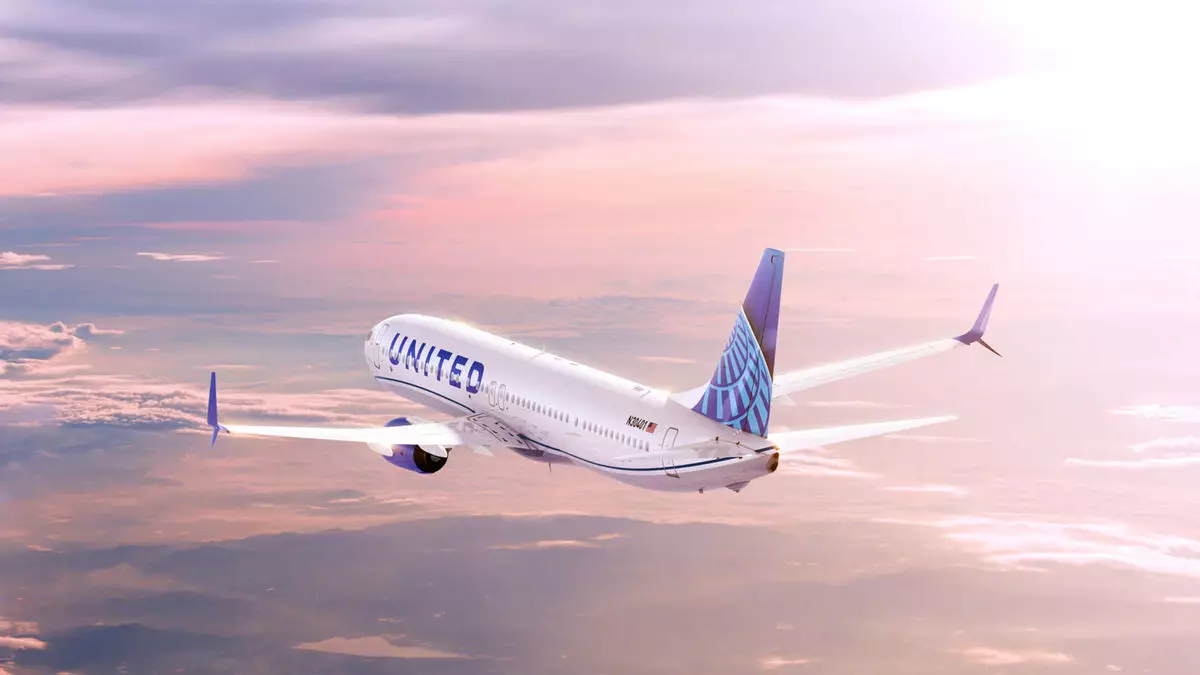The imminent rollout of Real ID enforcement at TSA checkpoints on May 7 looms heavily over United Airlines, stirring concern among its executives. Chief Commercial Officer Andrew Nocella, during a recent earnings call, voiced a near-pleading wish for a delay in the implementation of this requirement. His unease seems well-founded; after all, there is potential for significant disruption if many travelers arrive without the necessary identification. As the TSA prepares to initiate stringent checks, passengers lacking proper identification, including Real ID, passports, or suitable alternatives, may face extended delays or even be barred from boarding flights.
Nocella’s sentiments highlight a crucial challenge not only for United Airlines but for the airline industry as a whole. The TSA has opted against the phased implementation approach that was initially considered, likely influenced by calls for a more stringent and universally applicable policy. It raises questions about whether the existing traveler education and preparation measures are adequate to ensure seamless operations at security checkpoints. United and other airlines must brace themselves for the fallout that could arise if the rollout results in significant numbers of turnaways at the gates.
International vs. Domestic Demand: The Divergent Paths
Despite the anticipated chaos surrounding Real ID enforcement, there are significant shifts occurring within United’s booking dynamics that warrant attention. Nocella revealed a decline in origin bookings from Canada (down 9%) and Europe (down 6%) for the second quarter. While these figures sound alarming, they are not the entirety of the narrative. Interestingly, robust demand from U.S. origin passengers—constituting roughly 80% of the airline’s international business—continues to prop up the overall performance. This resilience in demand for international routes, particularly towards Asia, reflects shifting travel patterns as restrictions ease and travelers regain their confidence.
However, Nocella’s remarks also reveal an uncomfortable truth: the domestic market is wobbling. Even with a strong international demand backdrop, United finds itself responding to the reality of reduced interest in domestic travel. The plan to cut domestic operations by 4% in the third quarter, particularly during early morning and late evening hours, speaks volumes about the carrier’s recognition of this downward trend.
Adapting Amid Weakness: A Strategic Shift
In a proactive move to address the sluggish domestic demand, United Airlines is pivoting its strategy. Increasing the inventory of basic economy fares seems to be a clear attempt to entice passengers back into the skies. The domestic load factor dipped to 80.3% in the first quarter, a decline that flags a pressing need for tactical re-evaluation. By offering more affordable options, United hopes to bridge the gap created by waning interest in higher-priced seating, aiming to stabilize their load factors during tougher periods.
However, this strategy isn’t without its risks. While lowering fare prices can initially attract customers, there’s a delicate balance between competition and maintaining profitability. Slashing prices could lead to a situation where airlines compete in a race to the bottom, impacting the overall health of the sector. As industry dynamics shift, ensuring that fare adjustments don’t come at the expense of long-term viability is crucial.
Combatting Misinformation and Navigating the Future
In an age defined by wave upon wave of information, misinformation can exert a considerable influence on public perception and decision-making. Nocella took a stand against what he described as “completely false” reports concerning transborder bookings, a defensive move that underscores the importance of accuracy in airline reporting. The discrepancies, stemming from analyses by airline data companies, point to an uneasy relationship with data interpretation within the airline realm—one that is shadowed by the nuances of fluctuating bookings.
As United grapples with internal challenges and external pressures, fostering transparency and open dialogue with passengers and stakeholders is pivotal. Improving communication around requirements like the Real ID and adapting to changing market demands could be foundational to reclaiming trust and bolstering brand loyalty.
United Airlines is traversing a complex landscape filled with anticipation and trepidation. The interplay between regulatory demands and shifting consumer behavior encapsulates a pivotal moment in the airline’s evolution. Ultimately, steering through these challenges will require both adaptability and ingenuity, qualities that will determine United’s resilience in the years to come.


Leave a Reply